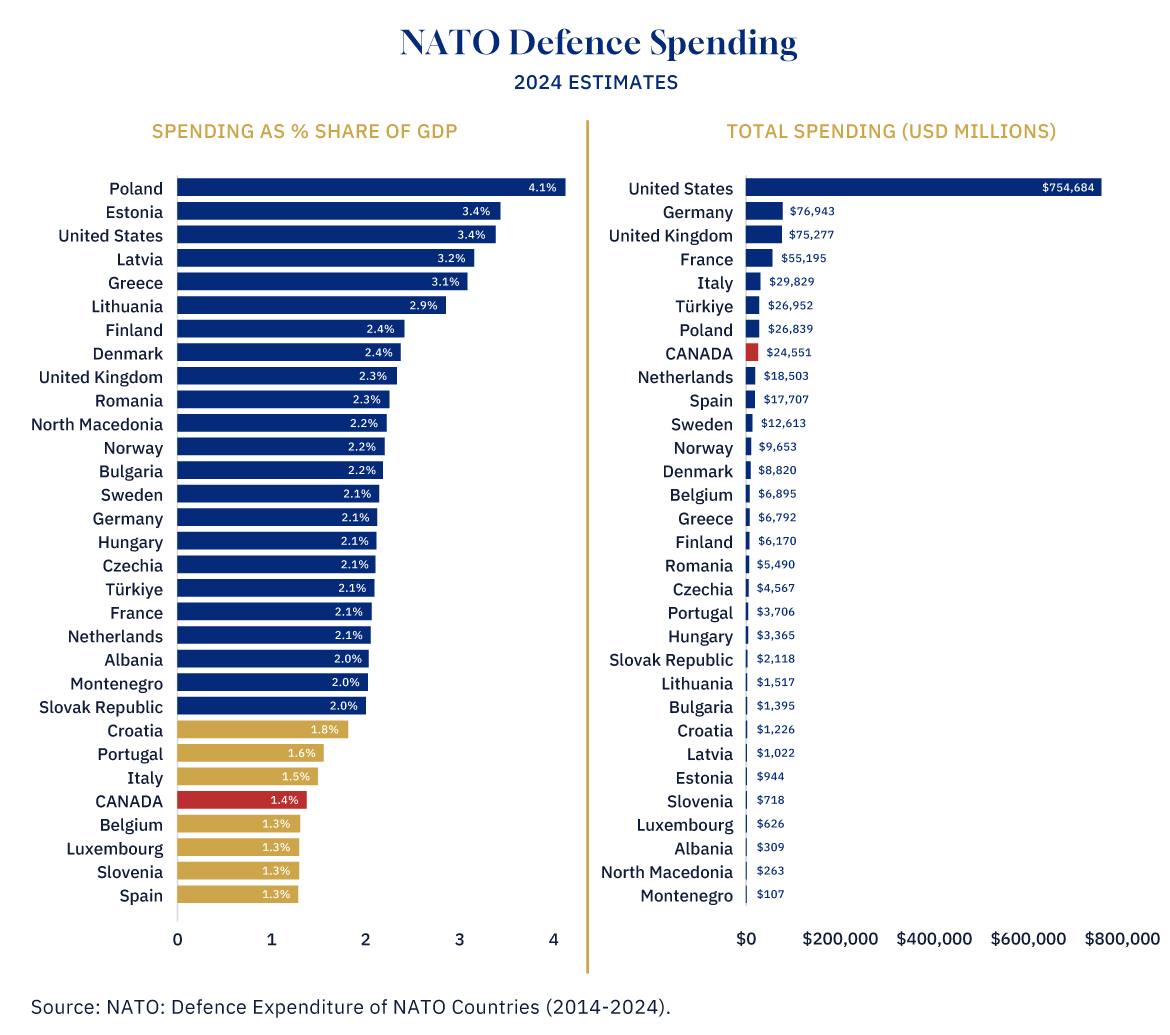In each EconMinute, Business Council of Alberta economist Alicia Planincic seeks to better understand the economic issues that matter to Canadians: from business competitiveness to housing affordability to living standards and our country’s lack of productivity growth. She strives to answer burning questions, tackle misconceptions, and uncover what’s really going on in the Canadian economy.
From health care to education to infrastructure, governments face no shortage of spending pressures. But there’s another line item that the federal government has recently committed to spending significantly more on: the military.
In 2006, all NATO defence ministers committed to allocating 2 percent of their gross domestic product (GDP) to defence spending to ensure the alliance’s “military readiness,” but Canada has yet to reach this goal. In fact, outside of COVID, the closest we’ve come was in 2017 when spending hit 1.44 percent of GDP.
However, that could change. During the annual NATO Summit back in July, the prime minister announced that Canada would reach that 2 percent target by 2032. That isn’t the first time federal governments have re-committed to the target, but it is the first time the commitment has come with a date.
To be fair, Canada hasn’t been alone. For over a decade, the majority of NATO countries did not meet the target. But the increasing global conflict has intensified pressure to do so.

The U.S.—one of the few countries that has consistently blown past this target—has long argued that it’s unfair that they do their part while others don’t. Some have even called out Canada’s contributions in particular as “shameful,” saying that “there have to be consequences.”
To be sure, in terms of total dollars spent, Canada does contribute disproportionately to the group’s total military spending. In fact, it’s consistently among the top ten spenders. Some may argue that this is what matters more than hitting any specific spending target. Nonetheless, Canada is a large economy, and it’s expected to contribute more, given its ability to do so.
Now, European countries are dedicating more resources to defence spending and meeting the target, but Canada is not. Estimates for 2024 show that Canada is now one of just eight countries below the target. In other words, Canada is no longer in a majority when it comes to failing to meet the standard.
Whether Canada will reach the target by the deadline remains to be seen. The Office of the Parliamentary Budget Officer’s (PBO) report released just three days before Prime Minister Trudeau’s announcement showed Canada’s defence spending was only expected to rise to 1.42 percent by 2029-30. Getting to 2 percent will mean a significant increase in spending beyond these projections. Canada’s ability to reach the target will depend not only on its ambition or economic size but also on its fiscal room amidst other spending pressures.
A version of this post was originally published by the Business Council of Alberta at businesscouncilab.com.










